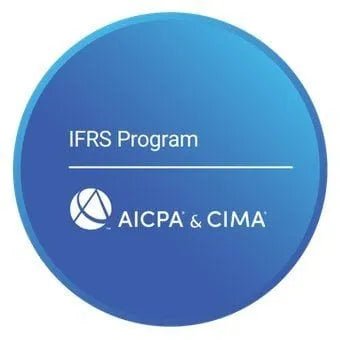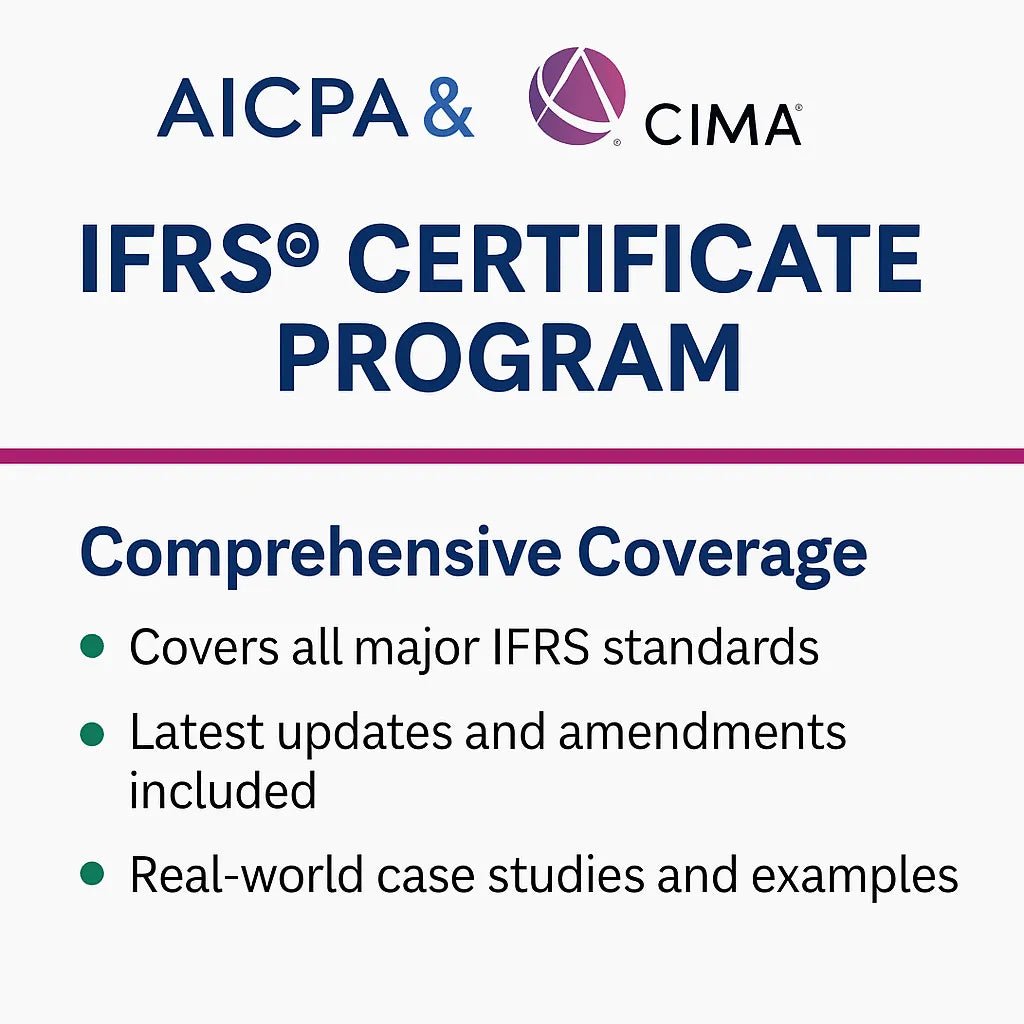IFRS 8: How Tech Giants Report Segments
How Tech Giants Apply IFRS 8: Netflix, Amazon & Beyond
🌐 Real-World IFRS 8: How Tech Giants Master Segment Reporting
How does Netflix decide to report streaming revenue by region? Or how Amazon separates its retail empire from its cloud computing business? Welcome to the fascinating world of IFRS 8 Operating Segments – where billion-dollar companies reveal their strategic secrets through segment reporting!
🎯 Why This Matters for Students:
- 📚 Exam Relevance: Real examples make theory stick
- 💼 Career Prep: Understand how major employers operate
- 🧠 Critical Thinking: Analyze actual corporate decisions
- 🚀 Future Success: Learn from the best in the business
🎬 Netflix: The Streaming Segment Master
📊 Netflix's Current Segment Structure
Netflix has evolved its segment reporting as its business has grown globally. Let us dive into their approach:
🌍 Geographic Segments (Primary Approach):
- 🇺🇸 United States & Canada (UCAN)
- 🌎 Europe, Middle East & Africa (EMEA)
- 🌏 Latin America (LATAM)
- 🌏 Asia-Pacific (APAC)
🎯 Why Netflix Chose Geographic Segments
🤔 The IFRS 8 Logic:
- ✅ CODM Decision Making: CEO and CFO review performance by region
- ✅ Resource Allocation: Different content strategies per region
- ✅ Economic Characteristics: Varying pricing and penetration by geography
- ✅ Regulatory Environment: Different regulations per country/region
Master IFRS 15: 50 Practice Questions on Revenue Recognition Explained
📈 Netflix's Segment Disclosures Breakdown
💰 Revenue by Segment (2023 Example):
UCAN: $13.2 billion (41% of total)
EMEA: $9.1 billion (28% of total)
LATAM: $4.3 billion (13% of total)
APAC: $5.8 billion (18% of total)
Total: $32.4 billion
👥 Subscribers by Segment:
UCAN: 75.6 million members
EMEA: 91.5 million members
LATAM: 47.4 million members
APAC: 46.9 million members
Total: 261.4 million members
Master IFRS 9: 50 Practice Questions on ECL, Classification & Hedging
🎓 Student Learning Points:
✅ Key Insights:
- 📊 Revenue Per User varies dramatically by region (UCAN highest, LATAM lowest)
- 🌍 Geographic diversity reduces risk and shows growth opportunities
- 📈 Emerging markets (APAC, LATAM) show higher growth rates
- 💡 Content investment disclosed separately but allocated to segments
🤔 Discussion Questions for Students:
- Why does not Netflix segment by content type (Movies vs TV vs Documentaries)?
- How do they allocate shared costs, such as original content, across segments?
- What happens when a show is popular globally but produced for one region?
Master IAS 16: 50 Practice Questions on PPE, Depreciation & Revaluation
📋 Netflix's Actual Disclosure (Simplified):
"Operating Segments"
We operate in four reportable segments based on geography: UCAN, EMEA, LATAM, and APAC. Our Chief Executive Officer evaluates segment performance based on contribution margin, which we define as revenues less cost of revenues and marketing expenses that are directly attributable to each segment.
🎯 Student Analysis:
- ✅ Clear identification of CODM (CEO)
- ✅ Specific performance metric (contribution margin)
- ✅ Geographic basis well-justified
- ✅ Direct cost attribution methodology
🛒 Amazon: The Multi-Business Segment Giant
🏢 Amazon's Segment Evolution
Amazon's segment reporting has evolved as the company has diversified:
📊 Current Segment Structure:
- 🛒 North America Retail
- 🌍 International Retail
- ☁️ Amazon Web Services (AWS)
🎯 Why Amazon's Segmentation Makes Sense
🧠 The Strategic Logic:
- ✅ Different Business Models: Retail vs Cloud services
- ✅ Different Customer Bases: Consumers vs Enterprises
- ✅ Different Economics: Margins, growth rates, capital requirements
- ✅ CODM Review: Jeff Bezos/Andy Jassy reviewed these three pillars
Master IFRS 16: 50 Practice Questions on Lease Accounting & ROU Assets
💰 Amazon's Financial Performance by Segment
📈 Revenue Breakdown (2023 Example):
North America: $352.8 billion (66% of total)
International: $131.2 billion (25% of total)
AWS: $80.1 billion (15% of total)
Total: $564.1 billion
💸 Operating Income/(Loss):
North America: $14.9 billion (profit)
International: ($2.5) billion (loss)
AWS: $24.6 billion (profit)
🚀 Key Learning Points for Students:
💡 What This Reveals:
- 🎯 AWS is the profit engine despite being the smallest by revenue
- 🌍 International expansion is a strategic investment (currently unprofitable)
- 🛒 North America retail provides stable, growing profits
- 📊 Different business cycles and investment phases
🤔 Critical Analysis Questions:
- Should Amazon break out advertising as a separate segment?
- How do they allocate shared technology costs?
- Why don't they segment retail by product category?
📋 Amazon's Disclosure Methodology:
"Segment Reporting"
We have organized our operations into three reportable segments: North America, International, and AWS. These segments reflect the way the company evaluates its business performance and manages its operations.
🔍 Student Observations:
- ✅ Clear link to management evaluation
- ✅ Operational management structure
- ✅ Performance measurement alignment
- ✅ Simple, understandable structure
🛠️ Complex Allocation Issues at Amazon:
🏢 Shared Services Challenge:
- 📊 Technology Infrastructure: How much goes to retail vs AWS?
- 👥 Corporate Functions: HR, Legal, Finance allocation
- 🏭 Fulfillment Centers: Retail vs AWS equipment storage
- 📱 Prime Membership: Revenue attribution across segments
🎓 Student Exercise:
"If you were Amazon's controller, how would you allocate the cost of their Seattle headquarters across the three segments? Justify your methodology."
🔍 Alphabet/Google: The Product-Based Innovator
💻 Google's Segment Structure Revolution
Google transformed its reporting in 2020 to provide more transparency:
📊 Current Segments:
- 🔍 Google Search & Other
- 📺 YouTube Ads
- ☁️ Google Cloud
- 🚀 Other Bets (Waymo, Verily, etc.)
🎯 Why Google Changed Its Approach
📈 The Evolution: ❌ Before 2020: Minimal segment disclosure ✅ After 2020: Detailed product-based segments 🎯 Driver: Investor demand for YouTube and Cloud transparency
💰 Alphabet's Segment Performance
📊 Revenue by Segment (2023 Example):
Google Search: $175.0 billion (57% of total)
YouTube Ads: $31.5 billion (10% of total)
Google Cloud: $33.1 billion (11% of total)
Other Bets: $1.3 billion (<1% of total)
Other Google: $66.3 billion (22% of total)
Total: $307.2 billion
🎯 Operating Income/(Loss):
Google Search: Highly profitable (not disclosed separately)
YouTube Ads: Profitable (part of Google Services)
Google Cloud: $3.2 billion profit (growing rapidly)
Other Bets: ($4.1) billion loss (R&D investment)
🚀 Student Learning Insights:
💡 Key Observations:
- 📈 Search dominance still drives overall profitability
- ☁️ Cloud growth represents future diversification
- 📺 YouTube scale justifies separate disclosure
- 🧪 Other Bets shows innovation investment
🤔 Advanced Discussion:
- Why separate YouTube from other Google advertising?
- Should Google break out Android/Play Store separately?
- How do they handle transfer pricing between segments?
📋 Alphabet's Disclosure Philosophy:
"Reportable Segments"
Our reportable segments are Google Services, Google Cloud, and Other Bets. We report Google Services as one reportable segment because we manage Google Services as one business, and the CODM evaluates performance and makes decisions about resource allocation at this level.
🎯 Student Analysis Challenge:
- ✅ Clear CODM identification
- ✅ Management decision alignment
- ❌ Some argue YouTube should be separate (and now it is!)
- ✅ Innovation investment transparency (Other Bets)
📊 Comparative Analysis: Three Different Approaches
💡 What Students Can Learn:
✅ Common Success Factors:
- 🎯 CODM Alignment: All reflect actual management structure
- 📊 Investor Value: Provide meaningful performance insights
- 🔍 Strategic Clarity: Help understand business priorities
- 📈 Growth Stories: Highlight emerging opportunities
🤔 Different Challenges:
- 📊 Cost Allocation: Each company faces unique shared service issues 🌍 Geographic vs Product: Different approaches to global businesses
- 💰 Profitability: Various approaches to segment P&L disclosure
- 🚀 Innovation: Balancing transparency vs competitive sensitivity
🏢 Other Tech Giants: Quick Analysis
📱 Apple: The Product Portfolio
Segments: iPhone, Mac, iPad, Wearables, Services Learning Point: Product-based segmentation for a hardware company
🔵 Microsoft: The Business Model Split
Segments: Productivity & Business, Intelligent Cloud, More Personal Computing Learning Point: Customer-focused segmentation strategy
🎮 Meta (Facebook): The Platform Approach
Segments: Family of Apps, Reality Labs Learning Point: Core business vs future innovation
💻 Tesla: The Integrated Approach
Segments: Automotive, Energy, Services Learning Point: Integrated ecosystem segmentation
🎓 Student Exercise: Build Your Analysis
📋 Choose Your Company Project:
🎯 Step 1: Company Selection
Pick a public tech company and find its latest annual report (10-K or 20-F)
📊 Step 2: Segment Analysis
- Identify current segments and their financial performance
- Find the CODM (usually mentioned in the segment note)
- Analyze the rationale for their segmentation approach
- Calculate key metrics (revenue %, growth rates, margins)
🤔 Step 3: Critical Evaluation
- Does the segmentation make sense? Why or why not?
- What alternative approaches could they consider?
- How has their segmentation evolved?
- What can investors learn from their segment disclosures?
📈 Step 4: Recommendations
- Suggest improvements to their segment reporting
- Justify your suggestions using IFRS 8 principles
- Consider stakeholder needs (investors, analysts, management)
🚀 Future Trends in Tech Segment Reporting
🔮 Emerging Patterns:
🌍 ESG and Sustainability Segments
📊 Some companies starting to report environmental impact by segment 🎯 Pressure for climate-related segment disclosures 💡 Integration of sustainability metrics with financial performance
🤖 AI and Machine Learning Segments
🧠 Companies like NVIDIA separating AI-related revenue 📈 Investor demand for AI performance transparency 🎯 Challenge of AI integration across traditional segments
🔗 Metaverse and Web3 Segments
🎮 Meta's Reality Labs as early example 🌐 Cryptocurrency and blockchain segment emergence 🚀 Virtual goods and services segmentation
📊 Regulatory Developments
- 🏛️ SEC pushing for more granular disclosures
- 🌍 International convergence on segment reporting standards
- 📋 Enhanced cybersecurity segment reporting requirements
💡 Key Takeaways for Students
✅ Essential Principles:
🎯 IFRS 8 in Practice:
- 📊 Follow the CODM: Segments reflect actual management decisions
- 🔍 Provide meaningful information: Help users understand the business
- ⚖️ Balance transparency vs competition: Do not reveal strategic secrets
- 📈 Evolve with the business: Segments should change as companies grow
💼 Career Applications:
- ✅ Understanding business strategy through segment analysis
- ✅ Identifying growth opportunities and risks
- ✅ Evaluating management decisions and resource allocation
- ✅ Comparing companies within and across industries
🧠 Analytical Skills:
- ✅ Reading between the lines of corporate disclosures
- ✅ Understanding business models through financial reporting
- ✅ Connecting strategy to numbers via segment performance
- ✅ Asking the right questions about corporate reporting
🎯 Practice Questions for Discussion
🤔 Scenario-Based Questions:
Question 1: Netflix Global Expansion
"Netflix is considering entering the gaming industry seriously. Should they create a separate gaming segment or include it in their geographic segments? Defend your answer using IFRS 8 principles."
Question 2: Amazon's Advertising Business
"Amazon's advertising revenue has grown to over $40 billion annually. Should this be a separate segment? What factors would influence this decision?"
Question 3: Google's Hardware Business
"Google sells Pixel phones, Nest devices, and Chromebooks. Why isn't hardware a separate segment? What would need to change for it to become one?"
📊 Analysis Challenges:
Challenge 1: Segment Reconciliation
Find a tech company's segment note and recreate their reconciliation from segment totals to consolidated financial statements.
Challenge 2: Peer Comparison
Compare segment reporting between two competitors (e.g., Netflix vs Disney+, AWS vs Azure, Google vs Facebook ads).
Challenge 3: Historical Evolution
Track how a company's segment reporting has changed over the past 5 years and explain the business reasons.
🎓 Conclusion: Segment Reporting as Strategic Communication
Tech giants use IFRS 8 segment reporting not just for compliance, but as a powerful tool to communicate their strategy, priorities, and performance to stakeholders. By studying real companies, students gain invaluable insights into:
🎯 How theory applies in practice
- 📊 How business strategy drives reporting decisions
- 🔍 How to analyze and interpret corporate disclosures
- 💼 How to think like a future business leader
The key insight? Segment reporting is storytelling with numbers – and the best companies use it to tell compelling stories about their past performance and future potential.
🚀 Ready to Master IFRS Like the Pros?
Understanding how major companies apply IFRS standards is crucial for career success. Eduyush bridges the gap between textbook theory and real-world application:
📚 AICPA IFRS Certification Course 🪙 Cutting-edge topics including crypto accounting 🎯 Real-world case studies and applications 🏆 Preparation for emerging accounting challenges
📚 Diploma in IFRS 🌍 International perspective on evolving standards 💻 Technology-integrated accounting education 👨🏫 Expert instructors who understand innovation
🚀 Transform your Understanding from academic to professional with Eduyush – where real-world expertise meets comprehensive education!
FAQs
ACCA blogs
Follow these links to help you prepare for the ACCA exams
IFRS blogs
Follow these blogs to stay updated on IFRS
Formats
Use these formats for day to day operations
- Account closure format
- Insurance claim letter format
- Transfer certification application format
- Resignation acceptance letter format
- School leaving certificate format
- Letter of experience insurance
- Insurance cancellation letter format
- format for Thank you email after an interview
- application for teaching job
- ACCA PER examples
- Leave application for office
- Marketing manager cover letter
- Nursing job cover letter
- Leave letter to class teacher
- leave letter in hindi for fever
- Leave letter for stomach pain
- Leave application in hindi
- Relieving letter format
Interview questions
Link for blogs for various interview questions with answers
- Strategic interview questions
- Accounts payable interview questions
- IFRS interview questions
- CA Articleship interview questions
- AML and KYC interview questions
- Accounts receivable interview questions
- GST interview questions
- ESG Interview questions
- IFRS 17 interview questions
- Concentric Advisors interview questions
- Questions to ask at the end of an interview
- Business Analyst interview questions
- Interview outfits for women
- Why should we hire you question
leave application format
- Leave application for office
- Leave application for school
- Leave application for sick leave
- Leave application for marriage
- leave application for personal reasons
- Maternity leave application
- Leave application for sister marriage
- Casual leave application
- Leave application for 2 days
- Leave application for urgent work
- Application for sick leave to school
- One day leave application
- Half day leave application
- Leave application for fever
- Privilege leave
- Leave letter to school due to stomach pain
- How to write leave letter
Insurance blogs
- Sample letter of appeal for reconsideration of insurance claims
- How to increase insurance agent productivity
- UAE unemployment insurance
- Insurance cancellation letter
- Insurance claim letter format
- Insured closing letter formats
- ACORD cancellation form
- Provision for insurance claim
- Cricket insurance claim
- Insurance to protect lawsuits for business owners
- Certificate holder insurance
- does homeowners insurance cover mold
- sample letter asking for homeowner right to repair for insurance
- Does homeowners insurance cover roof leaks













Leave a comment